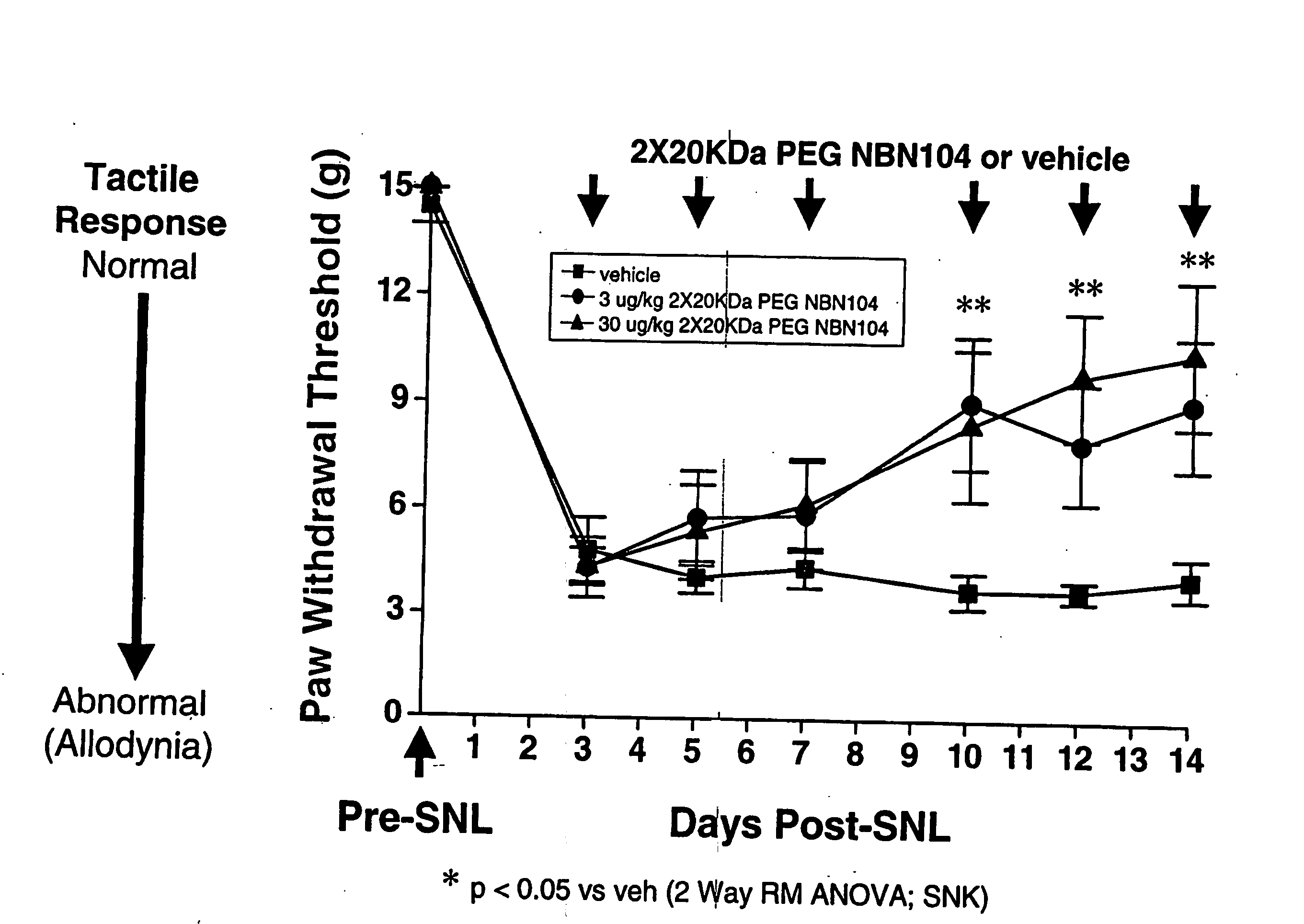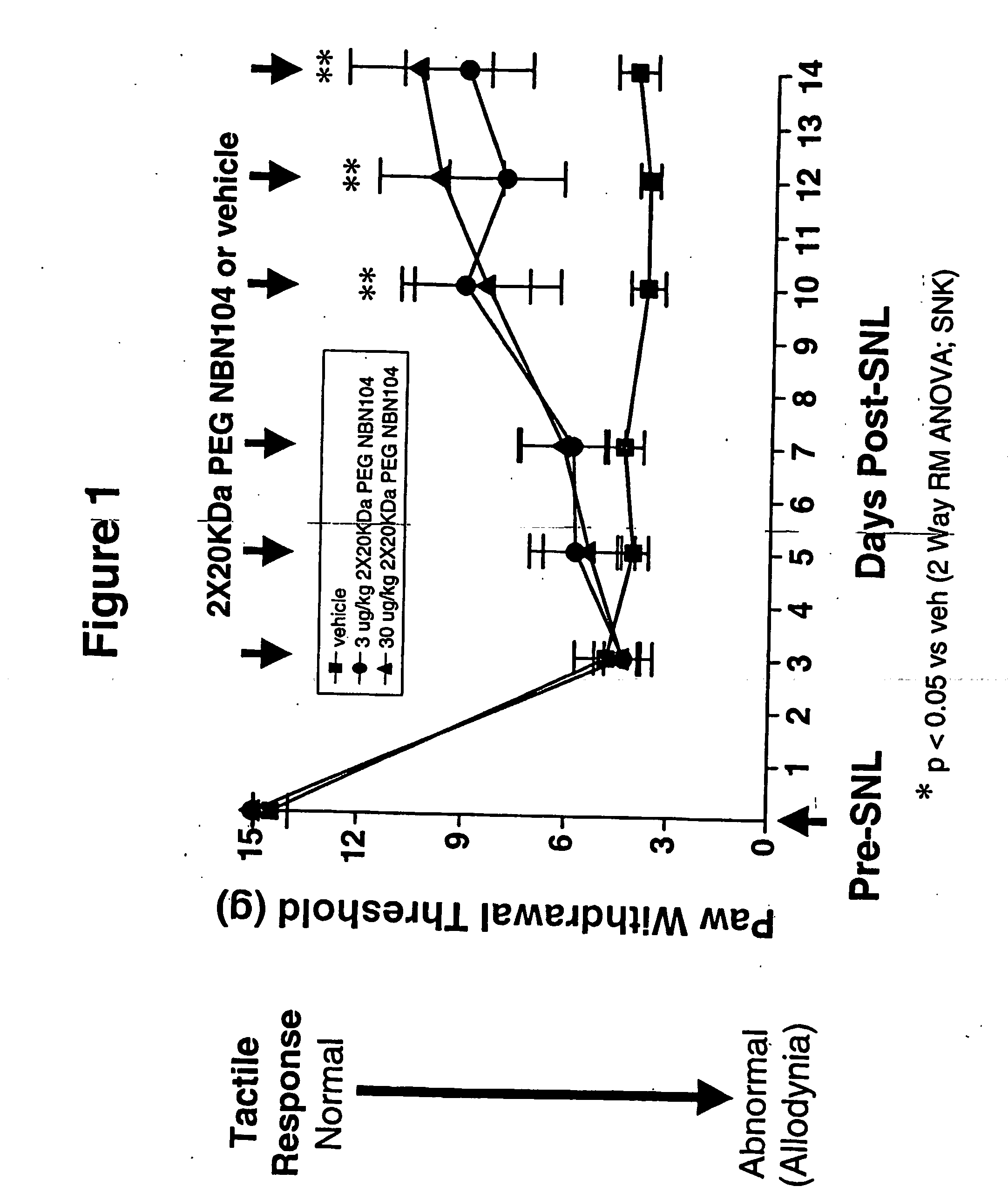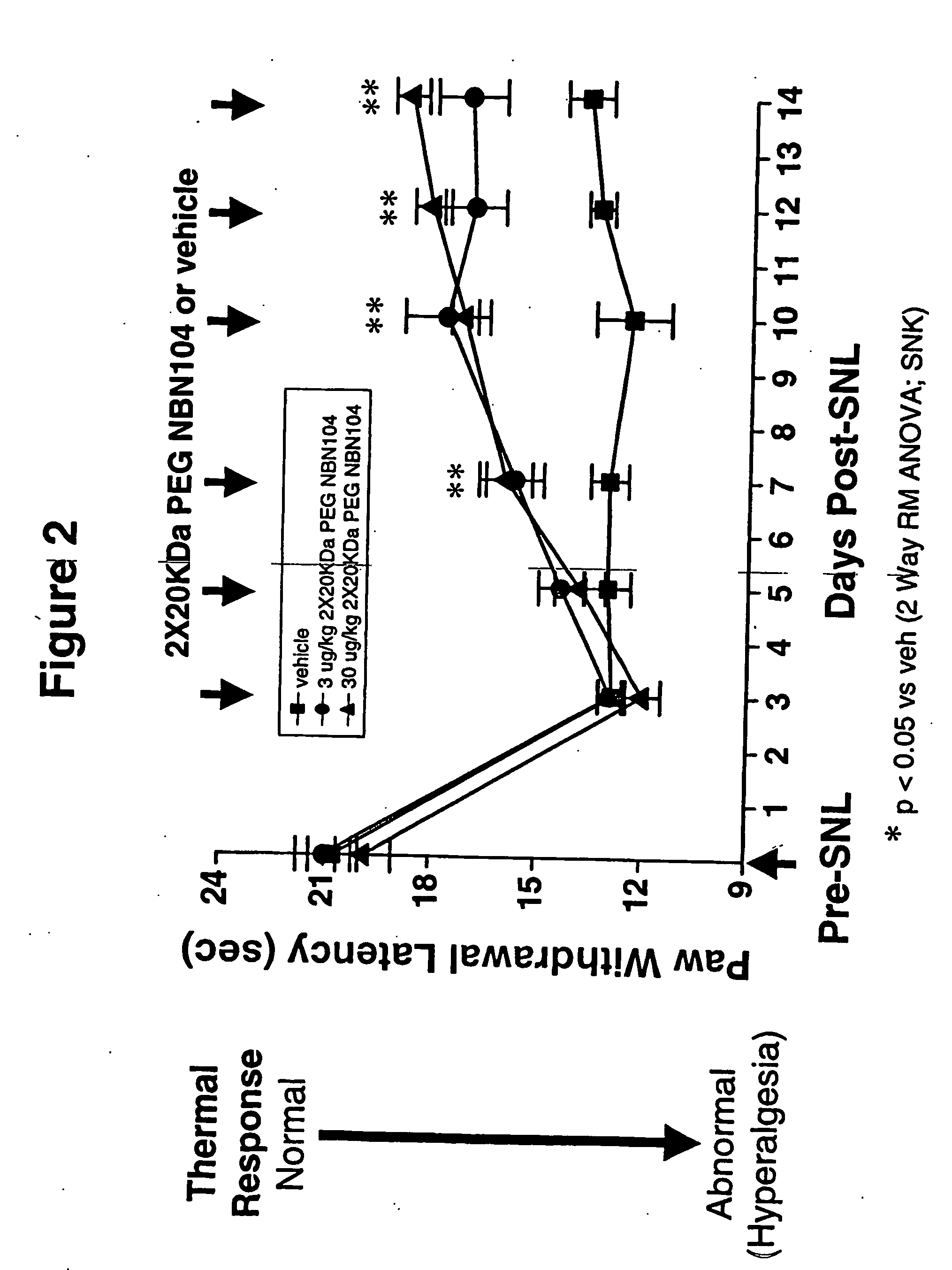Polymer-Conjugated Glycosylated Neublastin
a polymer-conjugated, neublastin technology, applied in the field of protein chemistry, molecular biology, neurobiology, neurology, and pain management, can solve the problems of the need for the neublastin dosing paradigm, and achieve the effect of significantly enhancing bioavailability and serum half-li
- Summary
- Abstract
- Description
- Claims
- Application Information
AI Technical Summary
Benefits of technology
Problems solved by technology
Method used
Image
Examples
example 1
Expression in Mammalian Cells
[0096] Mature human Neublastin (HNBN) is naturally expressed as a pre-pro-protein. This polypeptide contains a signal peptide sequence for direction of the protein into the secretory pathway, a prodomain that is cleaved and discarded upon maturation, and a mature protein. The mature protein of 113 amino acids contains a single glycosylation site and seven cysteine residues. The seven cysteine residues are involved in three intramolecular disulfide linkages plus a single intermolecular disulfide bond to form a disulfide linked, glycosylated homodimer.
[0097] Construction of plasmid pJC070.14 In order to express the human neublastin cDNA in Chinese hamster ovary (CHO) cells, a cDNA fragment encoding the prepro form of human neublastin was inserted into the mammalian expression vector pEAG347 to generate plasmid pJCO70.14. The plasmid pEAG347 contained tandem SV40 early and adenovirus major late promoters (derived from plasmid pAD2beta; Norton et al., 1985...
example 2
Expression of Rat Neublastin in CHO Cells
[0105] Construction of plasmid pCWEX017.1. A gene for rat neublastin was generated by ligating two fragments that together encode rat neublastin. Plasmid pJC102 consisted of a DNA fragment encoding the first 156 amino acids of rat prepro form of neublastin inserted into the TOPO cloning site of pCRII-TOPO r (Invitrogen). The fragment was amplified from Marathon-Ready t rat liver cDNA (Clontech) using the polymerase chain reaction with oligonucleotides AP2 5′ACTCACTATAGGGCTC GAGCGGC3′(SEQ IDNO:26) and KD3-171 5′GAACCGCTGCAGAAGCGGAAACGTATC3′(SEQ ID NO:27). A fragment containing the prepro domain and first 29 amino acids of the mature 113 amino acid form of neublastin was first amplified using the polymerase chain reaction from the plasmid pJC102 with the oligonucleotides KD3-214 5′AAGGAAAAAAGCGGCCGCCATGGAACTGGGACTTGGAGA3′(SEQ ID NO:28) and KD3-247 5′AGTTCGTCGGAAGAGTGTCCCAGGCCGAGAGCGC TCACCG3′(SEQ ID NO:29). A second fragment encoding amino aci...
example 3
Pharmacokinetics of PEGylated and Glycosylated Neublastin
[0111] The pharmacokinetic properties of PEGylated, gylcosylated neublastin in rat and mouse were examined. N-terminal PEGylation of glycosylated, truncated rat neublastin (N-terminus truncation of 9 amino acids; NBN104) with two 20,000 Da PEG moieties (2×20 KDa PEG NBN104) yielded a significant improvement in half-life and bioavailability of the neublastin. Following a 1.5 mg / kg subcutaneous administration to CD mice, serum levels of 97 ng / ml of PEGylated, glycosylated neublastin were detected at 24 hours. In contrast, following a 1.5 mg / kg subcutaneous administration of non-glycosylated NBN pegylated with two 20000 Da PEGs (2×20 KDa PEG) to mice, neublastin serum levels were 39 ng / ml at 24 hours. Neublastin was not detectable at 24 hours following a 1.5 mg / kg subcutaneous administration of unmodified glycosylated NBN104 to mice, indicating that serum levels of neublastin were less than 5 ng / ml. Surprisingly, the serum level...
PUM
| Property | Measurement | Unit |
|---|---|---|
| average total molecular weight | aaaaa | aaaaa |
| average total molecular weight | aaaaa | aaaaa |
| average total molecular weight | aaaaa | aaaaa |
Abstract
Description
Claims
Application Information
 Login to View More
Login to View More - R&D
- Intellectual Property
- Life Sciences
- Materials
- Tech Scout
- Unparalleled Data Quality
- Higher Quality Content
- 60% Fewer Hallucinations
Browse by: Latest US Patents, China's latest patents, Technical Efficacy Thesaurus, Application Domain, Technology Topic, Popular Technical Reports.
© 2025 PatSnap. All rights reserved.Legal|Privacy policy|Modern Slavery Act Transparency Statement|Sitemap|About US| Contact US: help@patsnap.com



